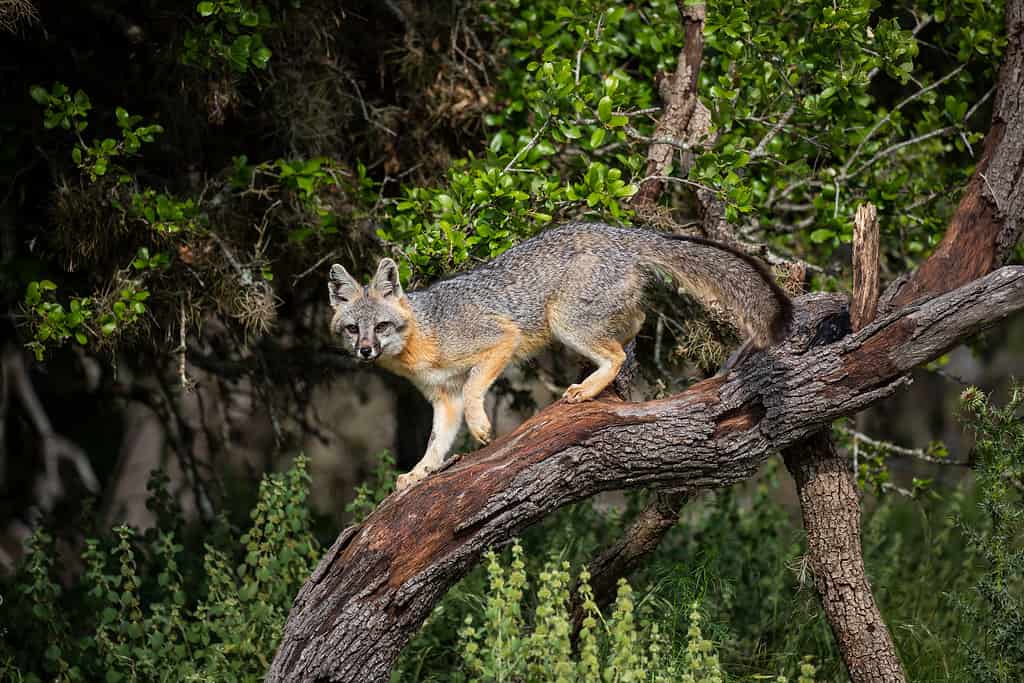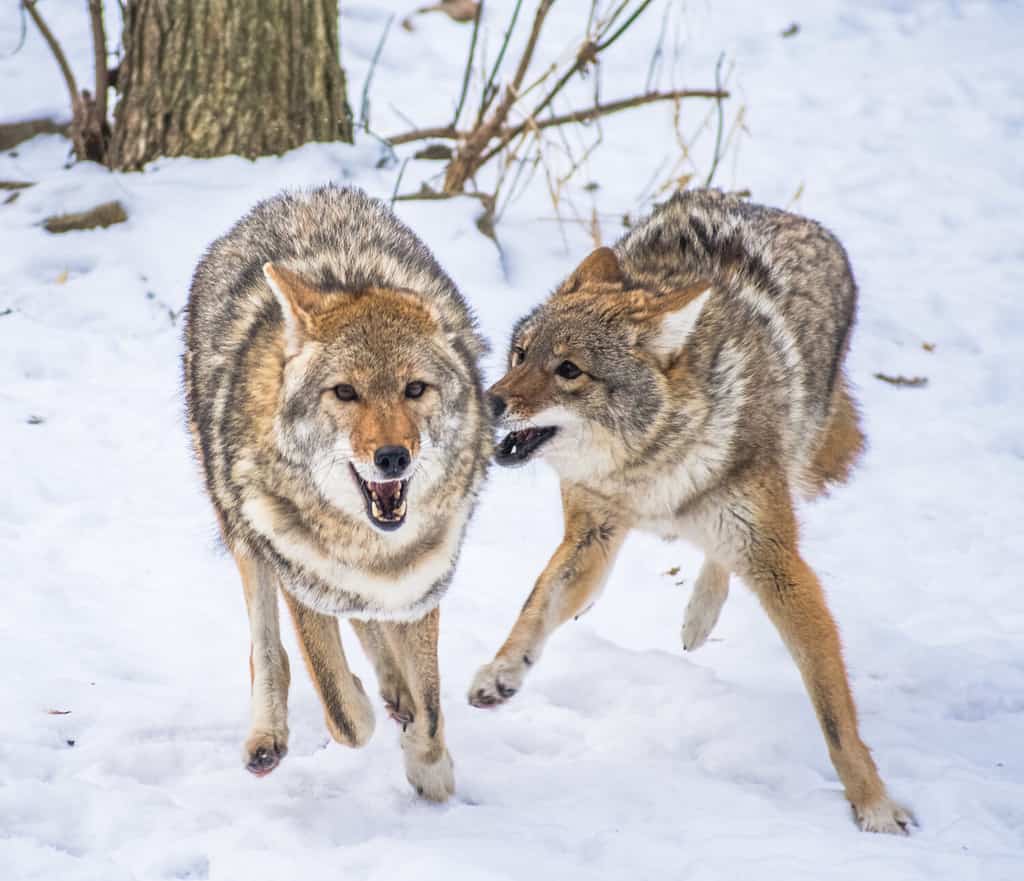Did you know Arkansas has two native fox species? Both the red fox (Vulpes vulpes) and gray fox (Urocyon cinereoargenteus) call Arkansas home. Both species are a mix of crepuscular and nocturnal in habit, though you may also see them out during the day, especially during breeding season when they have kits, or baby foxes, to feed. Read on to find out more about where they live, how to tell them apart, and if any other wild canines roam Arkansas.
Red Fox (Vulpes vulpes)

The classic red fox coloration includes an orange-red coat, black “stockings,” and a long, bushy, white-tipped tail.
©iStock.com/Harry Collins
The red fox is the largest and most widespread of the “true foxes” of the Vulpes genus. They are a remarkably adaptable species that can utilize a wide variety of habitats, including areas opened up by human development. It is not uncommon to now see them in suburban and even urban areas.
Their most-recognized coloration is an orange-red coat with whitish or greyish undersides, black legs, and a white-tipped tail. However, the common name is a bit misleading, as their primary pelt color varies both across and within populations worldwide. “Red” fox fur can be almost any color that our own human hair can be, thanks to similar melanin pigments!
Adult red foxes generally weigh between 8-15 pounds, with males slightly heavier. Length averages from 39-43 inches, including the long, bushy tail.
Gray Fox (Urocyon cinereoargenteus)

Gray foxes have excellent tree-climbing abilities.
©Danita Delimont/Shutterstock.com
The gray fox is actually not a “true” fox — that is, it is not classified in the Vulpes genus. Rather, it is classified in the Urcoyon genus along with its only other close relative, the island fox (Urocyon littoralis). Current DNA evidence suggests this is the most basal clade of all living canids!
While gray foxes can sometimes also be spotted in developed areas, they prefer the cover of woodland habitat. In Arkansas, they are often found in pinyon-juniper woodlands. Unique among the canids, they are also specially adapted for climbing trees, with long, hooked claws.
Adult gray foxes are usually slightly smaller than red foxes. They generally weigh 7-15 pounds, with males again slightly heavier. Total length, including tail, averages from about 30-44 inches. Their beautiful gray, grizzled upper coat, rust and white colored underside highlights, and long black stripe down the back of the tail also readily distinguish them from red foxes.
What Other Wild Canids Can You Find in Arkansas?

Like red foxes, coyotes have proven themselves readily adaptable to human development and continue to expand their range across the United States.
©Dan J Rozak/Shutterstock.com
Once upon a time, the red wolf (Canis rufus) also roamed the wilds of Arkansas. Unfortunately, this now critically endangered species has long been removed from the state.
However, there is another native canid still thriving in Arkansas — the coyote (Canis latrans). They are significantly larger than both their fox cousins, with Arkansas coyotes weighing an average of 25-35 pounds. They are further differentiated by their usually black-tipped tails.
Furthermore, recent reports of wolf sightings in the state may instead be examples of “coywolves.” These coyotes tend to be larger and more color-varied than their cousins, the result of past interbreeding with native wolves and domestic dogs.
Conclusion
Arkansas has two native fox species, the red fox and the gray fox. Both are found statewide, but the red fox is the more commonly encountered of the two. While the gray fox tends to prefer the cover of woodland habitats, the red fox is regularly spotted in a wide variety of habitats, including suburban and even urban areas. Additionally, there is a third wild canid species common across Arkansas, the coyote.
It is also important to keep in mind that you may also encounter lost, abandoned, or stray domestic dogs. If you find what you believe is a non-wild canine, please reach out to your local rescue!
The photo featured at the top of this post is © iStock.com/Rejean Bedard
Thank you for reading! Have some feedback for us? Contact the AZ Animals editorial team.







